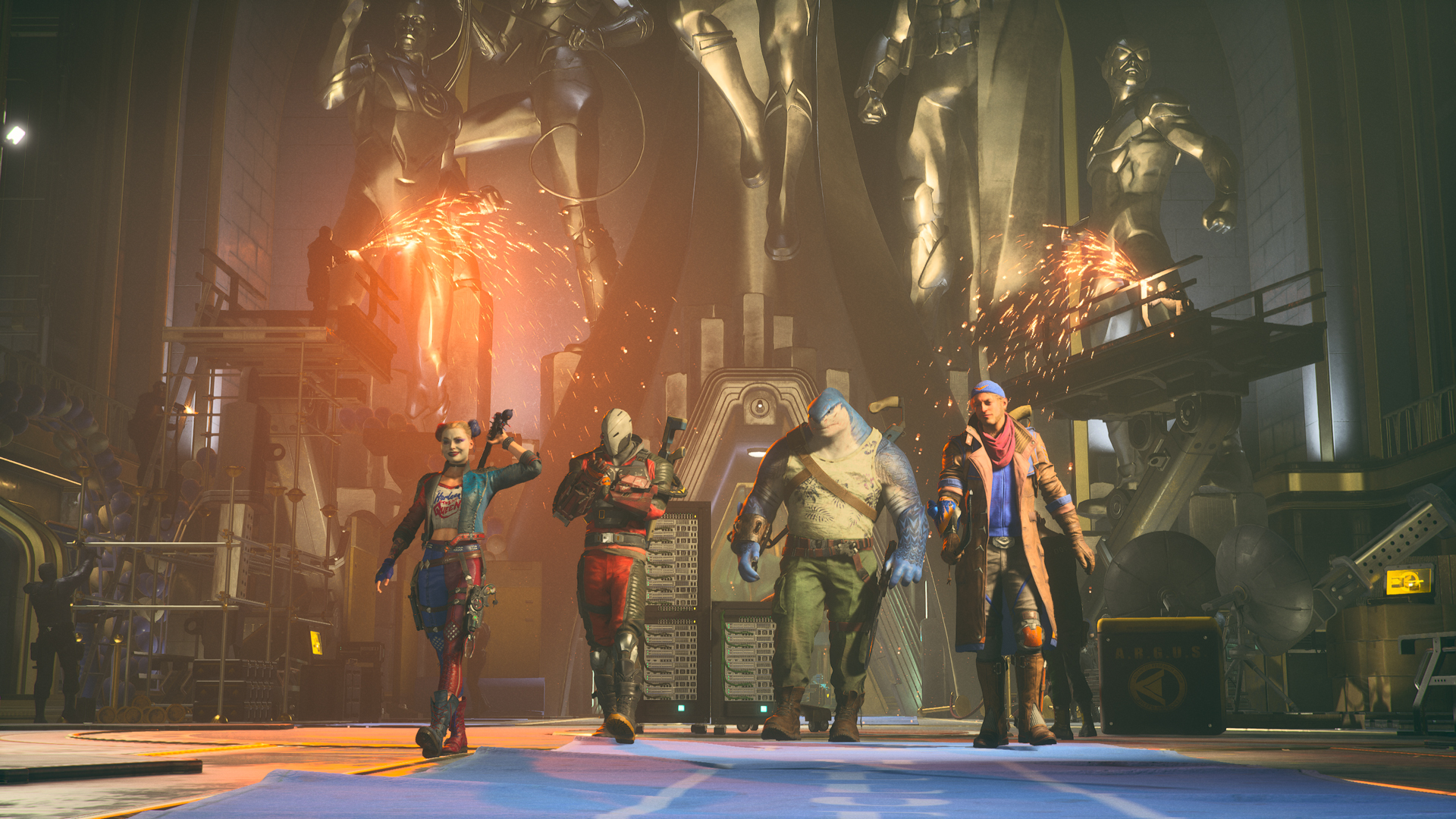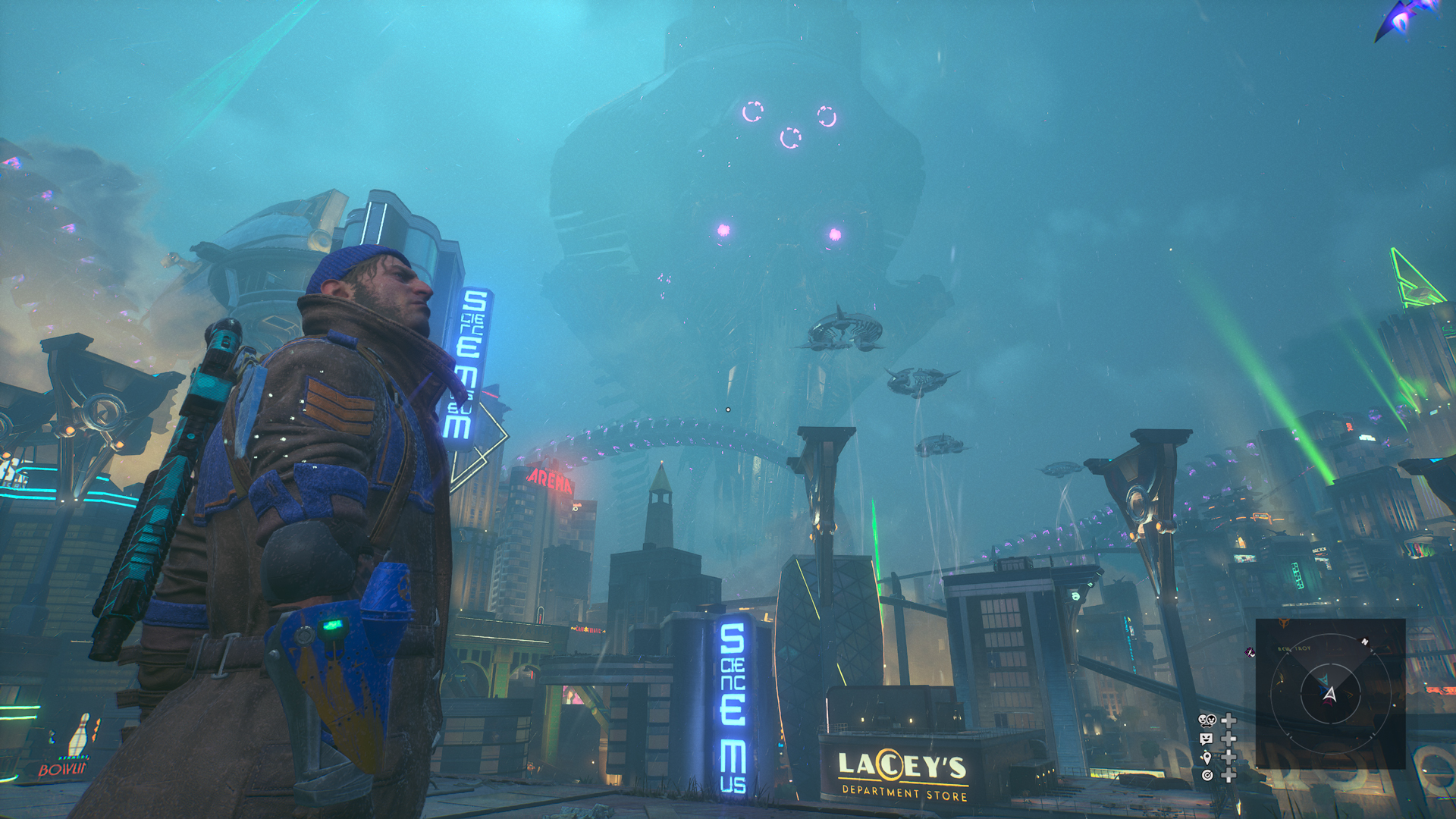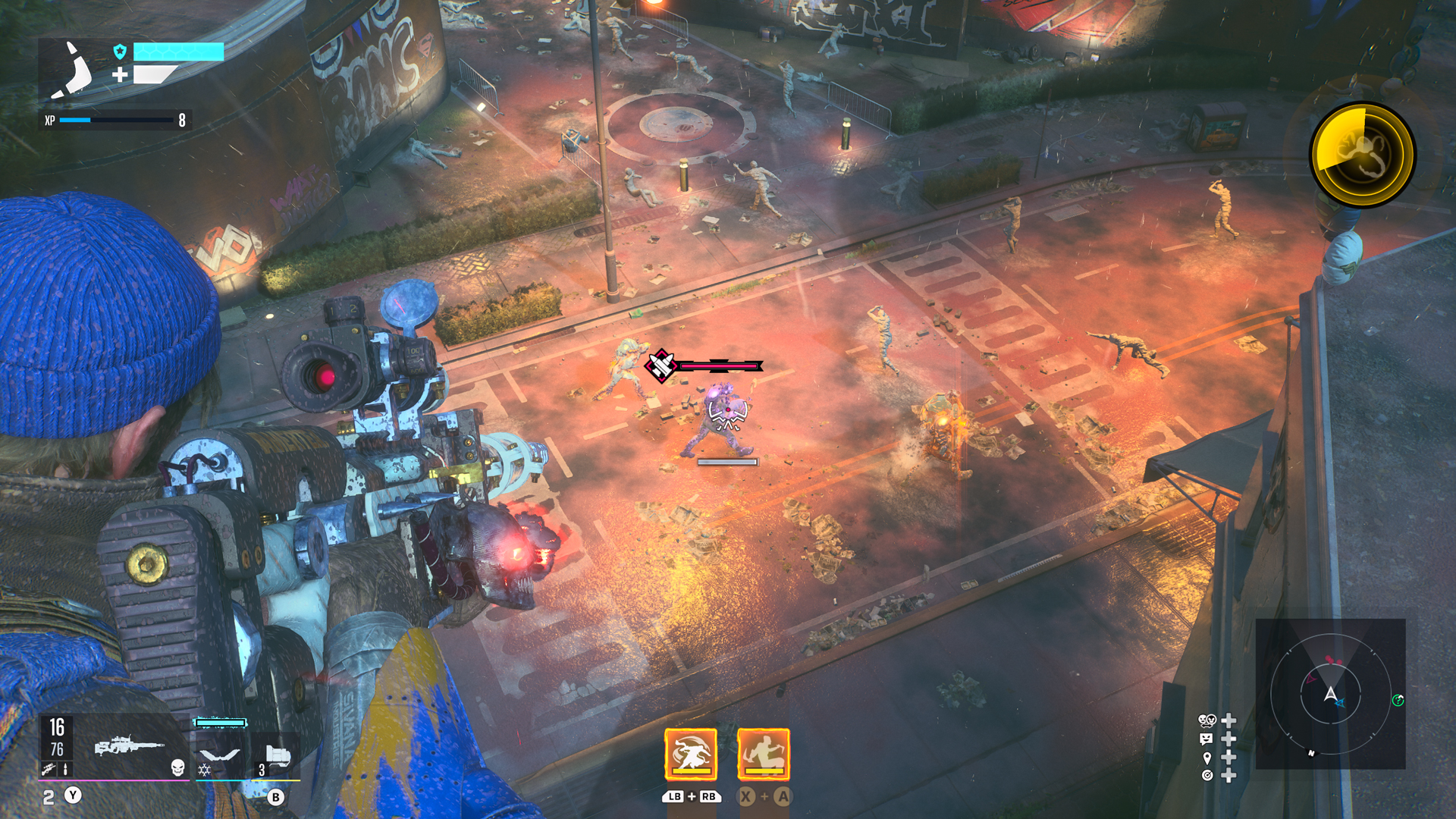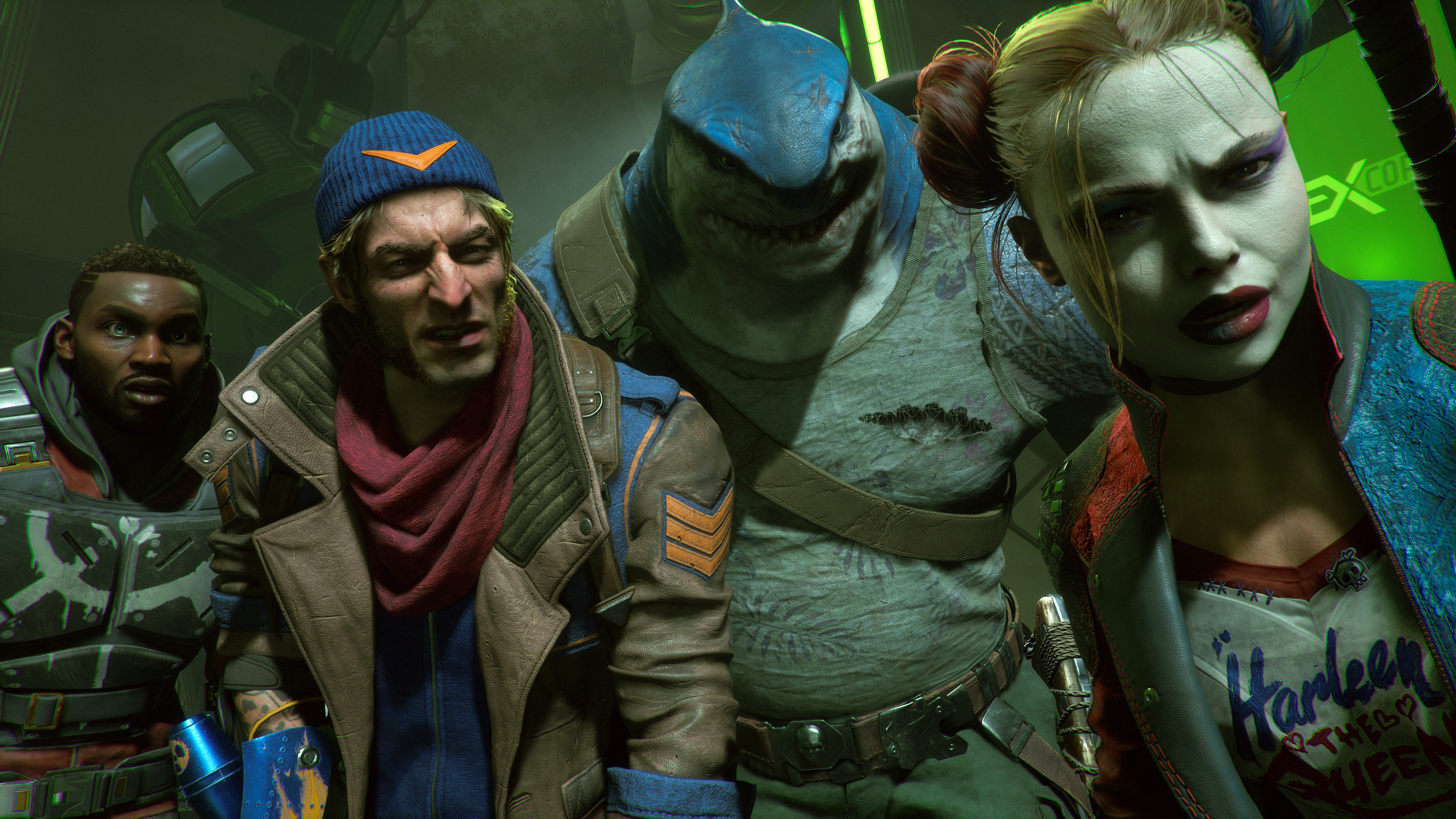
Being a superhero isn't supposed to be easy. There's the constant calamities and the secret identities, cramped costumes and the need to earn an undergraduate degree in mathematics. Listen, you'll need that last one to deduce your chances of survival in the City of Tomorrow. How else will you know whether that legendary-tiered AmerTek shotgun is more effective at targeting waves of flashing weak points than the similarly-shaped offering stolen from the G.C.P.D. Lockup? I'd wager that this sort of mental arithmetic isn't something the Earth's mightiest heroes need typically concern themselves with, but then we aren't exactly dealing with the best and brightest in Suicide Squad: Kill the Justice League.
Released date: February 2, 2024
Platform(s): PC, PS5, Xbox Series X
Developer: Rocksteady Studios
Publisher: Warner Bros. Games
Captain Boomerang, Deadshot, King Shark, and Harley Quinn; a ragtag group of villains conscripted out of Arkham Asylum to fight for the future of humanity. The mission: assassinate the greatest heroes DC has to offer, or die trying. It's a hell of a setup, leveraging the legacy of the Arkhamverse to thunderous effect as an invading Brainiac unleashes an apocalypse event on Metropolis. It's silly and self-aggrandizing, the sort of rapturous storytelling that an enterprising creative team can typically only deploy in the shadow of a big summer crossover event. This experience feels authentically comic book in that way, even as Suicide Squad: Kill the Justice League succumbs to the challenges inherent to bringing such an endeavor to life as interactive entertainment.
A worthy death

It's difficult to believe, but it's been nine years since Rocksteady Studios concluded its stewardship of the Caped Crusader in Gotham City with Batman: Arkham Knight. Then again, Suicide Squad: Kill the Justice League has this way of making it feel as if no time has passed at all. So much of its underlying design feels like a product of the past, as if it were directly inspired by the novel structure of The Division, dazzling traversal from Sunset Overdrive, and audacious combat of Saints Row: Gat out of Hell. The problems that emerge in the combination of these now-dated touchpoints are prevalent.
The focus on collecting and cycling through loot feels fundamentally misaligned with the superhero fantasy Suicide Squad: Kill the Justice League is otherwise trying to capture; an endemic problem for publisher Warner Bros. Games, having run afoul of this same issue with Gotham Knights. It's a strange metric of progression, particularly for villains who have already earned the ire of heroes like Green Lantern and Flash within this universe; and ill-fitting, like King Shark squeezing into Superman's spandex suit – an image forever seared into my retinas thanks to the cosmetic store.
Movement should be the star of Suicide Squad: Kill the Justice League, but traversal is somewhat stilted and cumbersome. Action is difficult to track as Harley Quinn limply grapples between anchor points, while Deadshot is too exposed to properly make use of his jetpack. Captain Boomerang handles best in his embrace of the Speed Force, but the controls feel overextended, making it tricky to properly chain traversal moves and attacks together without encountering friction. There's so much pressure placed on traversal systems too, used as the primary driver to give the combat some life – an enduring series of flaccid rooftop encounters, wherein you juggle swarms of alien enemies with conventional weaponry and cacophonic abilities that overcrowd the user interface. Movement and combat aren't wholly unlikeable, but these aspects lack the weighted feedback and tempered precision that Rocksteady built its reputation around.

There's every chance that some of these fundamentals may improve (or at least become more familiar) over time, particularly as I progress further along the three progression trees available to each of the four playable characters. Rocksteady has made two interesting decisions here: the first being that you don't necessarily have free reign to invest skill points where and when you want to, which feels needlessly restrictive, and the other being that earned experience isn't shared between the group. That latter point isn't so much of an issue in multiplayer, which is easy to jump in and out of with players across PC, PS5, and Xbox Series X.
It is, however, possible to play Suicide Squad: Kill the Justice League on your own (albeit always online) with sharply responsive AI filling the gaps if you aren't interested in playing nice with others, but this XP-limiter ensures that members of Task Force X can get left behind as you spend more time with your favorite of the four. Not only does this act as a natural deterrent to switching between characters, which you can do easily outside of missions, but also ensures that the others become less proficient in a support capacity over time. It's a strange creative choice, particularly as the group otherwise accesses a shared loot pool (and will routinely, annoyingly update their loadouts from it automatically), and because Rocksteady's sister studio WB. Games Montreal brushed up against (and solved) this particular issue in Gotham Knights two years ago.
I need a hero

In spite of these issues, I am enjoying myself in fits and starts. Suicide Squad: Kill the Justice League is the first Rocksteady game in a long time to feature a natural lighting source, with the sunlight cast across Metropolis bringing greater exposure to the phenomenal character animations, and the expressive detail of each character as they each work to denigrate the other into submission. The wide scale of the city is impressive too, with Brainiac's fortress an ever-present threat cresting across the horizon – it's the sort of sight that wills you to explore, even if the space itself is largely devoid of any meaningful activities or points of interest beyond Riddler trophies and challenges.
10 hours into the adventure, Suicide Squad: Kill the Justice League really does feel as if it is primed to be the sort of divisive adventure that delights and disappoints in equal measure. For those here to see whether Rocksteady has really been granted the free reign to kill the heroes of the Arkhamverse – one of the most successful new universes DC has spawned in decades – then I suspect that you'll enjoy yourself, as there's an inherent quality to the storytelling and cutscenes that's difficult to ignore.
For those looking for a compelling superhero game – one which either captures the hefty combat of the Batman: Arkham trilogy, the world-density of Marvel's Spider-Man 2, or the generosity of Marvel's Guardians of the Galaxy's scenario design – then I fear you may find yourself left wanting. Unless, of course, monotonously shooting at the same groupings of enemies until the spawning stops sounds like your idea of a good time.







